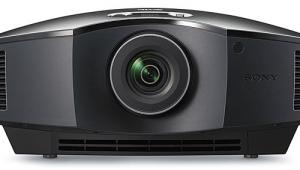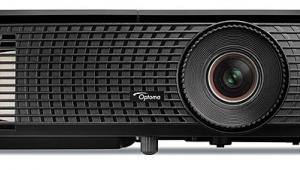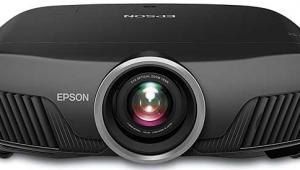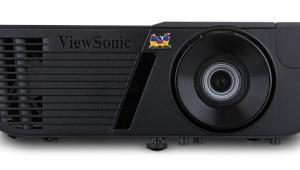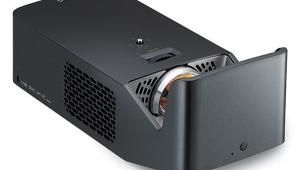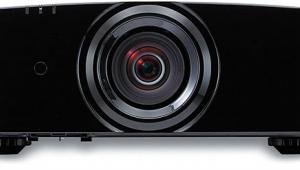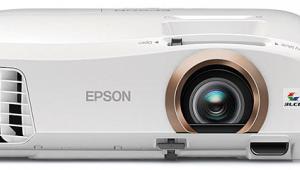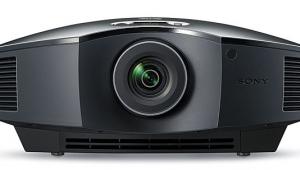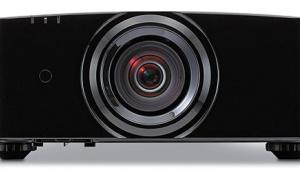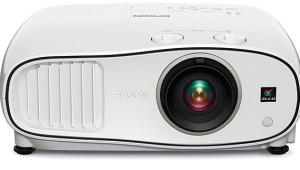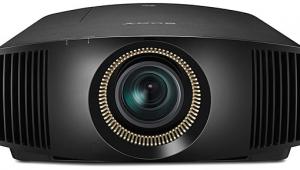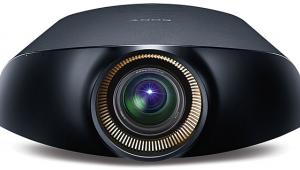Sony VPL-VW1000ES 4K SXRD Projector HT Labs Measures
Full-On/Full-Off Contrast Ratio: 152,000:1
Except as noted, all of the 2D measurements were taken with the projector in the Cinema: Film 1 Calibrated Preset with the lamp control on high, the gamma correction on 2.6, the Advanced Iris set to Auto Full, and the other controls set for the most accurate image within these parameters. There were approximately 160 hours on the projection lamp. The screen was a 118-inch-wide, Stewart Filmscreen StudioTek 130 G3 (gain 1.3).
The full-on/full-off contrast ratio shown above was measured directly off the projection lens using a Minolta T-10 (illuminance) light meter. The 100-percent full-white reading off the screen with the above settings was 21.35 foot-lamberts as taken by our Minolta LS-100 light meter. The black level with the dynamic iris engaged, as seen on this screen, was too low to measure directly by any device available to us. But by using the direct contrast as measured by the T-10 meter, together with the 100-percent white level on the screen as measured by the LS-100, I calculated the full-screen black level to be a remarkable 0.00014 ft-L.
But when any bright object appears on the screen, the black level will increase since the dynamic iris responds to the average picture level. With the Advanced Iris set to off (wide open with no dynamic action) and the gamma correction on 2.2, the full-on/full-off contrast ratio dropped to 2,372:1 (21.35 ft-L full white, 0.009 ft-L full black).
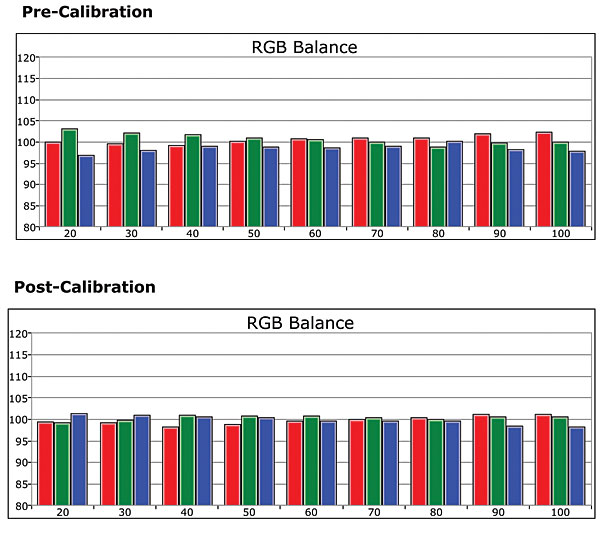
The Color Tracking charts show how well a display adheres to the D65 standard white point at each step in the brightness scale. Note the new form for this chart here, as compared with our earlier reviews. But it conveys the same information. The more tightly matched the three primary colors, the nearer the result is to the D65 standard at each point in the brightness range. The 2D pre-calibration result was excellent and only slightly improved by calibration—though keep in mind that this sample of the projector was pre-production. Post calibration, the result was exceptional, with Delta E values remaining below 1.0 up to 80 percent of peak white, increasing only to 2.17 at 100 percent. (Delta E is a figure of merit indicting how closely the result is to the ideal white point of D65. Below 3 is generally considered visibly indistinguishable from a perfect result.)
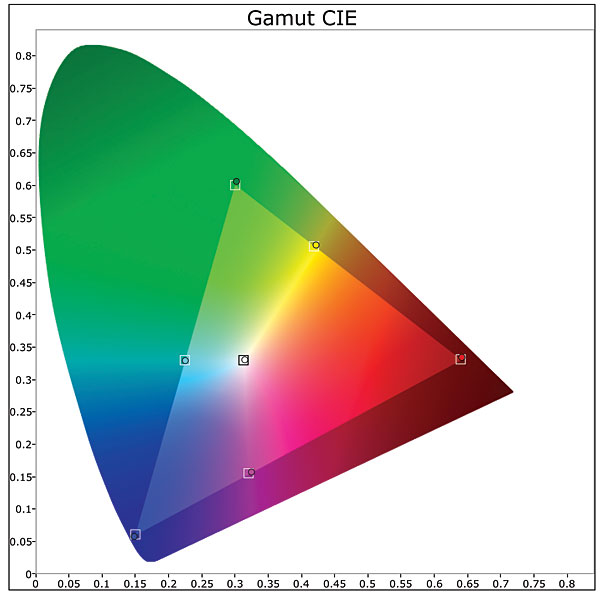
The CIE chart shows an acceptably accurate BT.709 (Rec. 709) color gamut, although the brightness of some of the individual colors (not depicted by the chart), particularly cyan and even more so green, was somewhat excessive. While these errors were not correctable as the projector currently lacks a color management system, they will not be visible to most viewers on normal program material.—TJN

